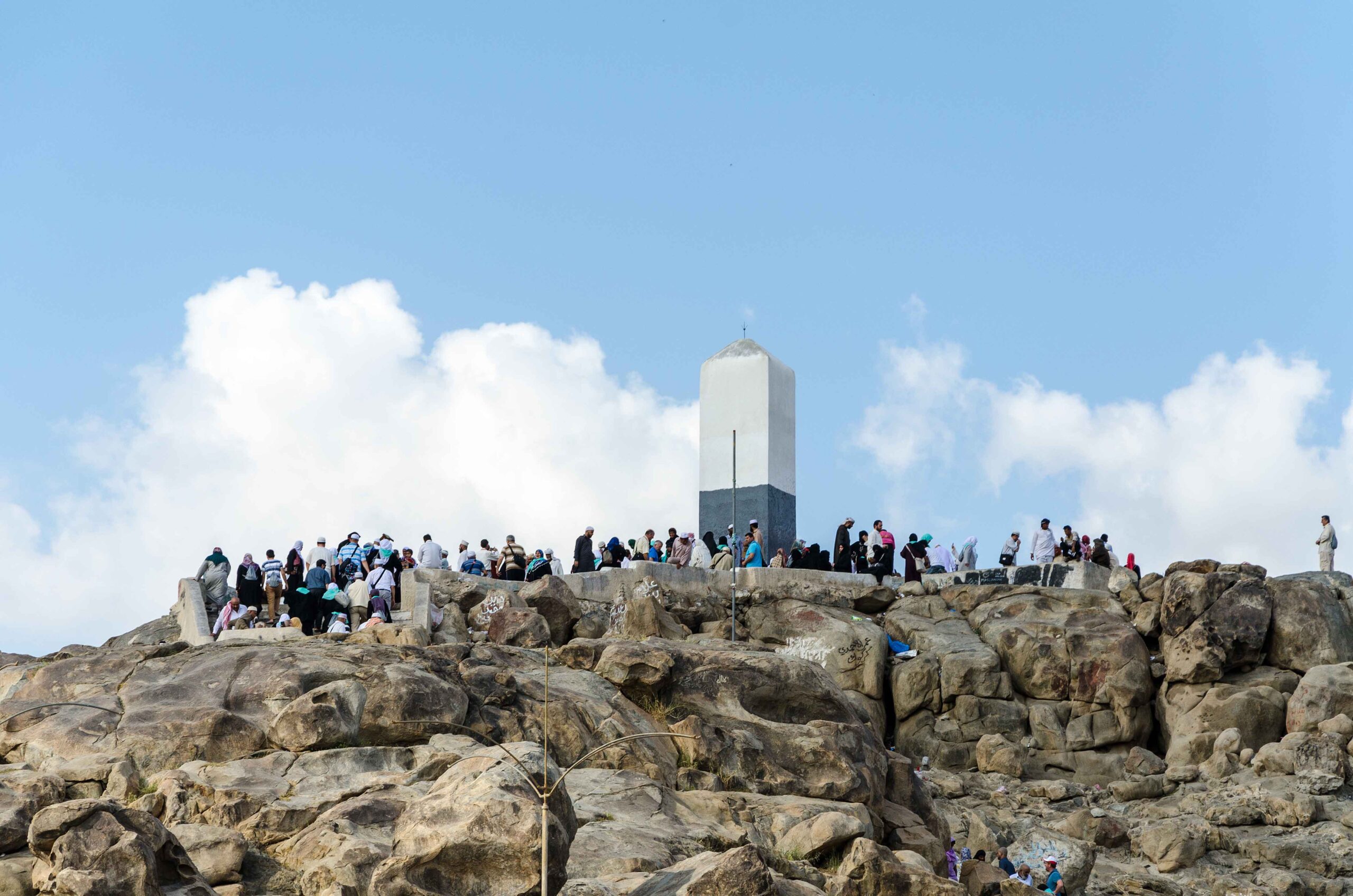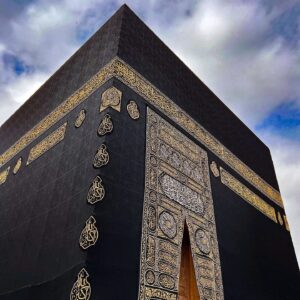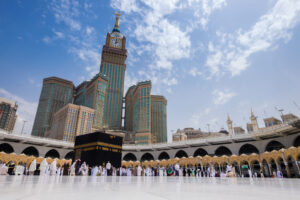At the heart of the Hajj journey stands Mount Arafat, a sacred place where faith and forgiveness meet. Just twenty kilometers east of Makkah, the mountain rises nearly seventy meters high, surrounded by a vast plain that bears the same name, Arafat. Each year, it becomes the setting for one of the most powerful scenes of worship in Islam: the Day of Arafah, the ninth day of Dhul-Hijjah, known as the pinnacle of Hajj.
But many wonder: why is it called Mount Arafat?
The Meaning Behind the Name: Knowledge, Recognition, and Reunion
Islamic scholars have offered several explanations for the name “Arafat,” each connected by themes of understanding, meeting, and forgiveness, values that reflect the very essence of this holy place.
- A place of meeting and acquaintance:
Some say that pilgrims in ancient times would meet and get to know one another on this plain. Since it was a place where people “recognized” or “became acquainted” with each other, it came to be called Arafat, from the Arabic root ‘arafa, meaning “to know.” - Gabriel’s guidance to Prophet Ibrahim (AS):
Another narration tells that the Angel Gabriel taught Prophet Ibrahim (AS) the rites of Hajj. When they reached this mountain, Gabriel asked, “Have you understood?” and Ibrahim replied, “I have understood.” Hence, the place was named Arafat, a place of knowing and understanding. - The reunion of Adam and Hawa (Eve):
A third narration holds that after being sent down to Earth, Prophet Adam (AS) and Hawa met again on this very mountain, and they “recognized” one another. Thus, the name Arafat symbolizes reunion after separation.
Though these stories differ, they share a deeper truth: Arafat is the place of knowledge, recognition, and divine mercy, a fitting meaning for a mountain that unites millions of hearts in worship.
The Significance of Mount Arafat in Hajj
Standing on Arafat is the most essential pillar of Hajj. Prophet Muhammad (PBUH) said:
“Hajj is Arafah.”
This means that whoever misses standing on Arafat misses the essence of Hajj itself.
On the Day of Arafah, pilgrims gather on the mountain and across its surrounding plain from noon until sunset, raising their hands in supplication, seeking forgiveness, and repeating the timeless call:
“Labbayk Allahumma Labbayk”
These moments are among the most moving and spiritually profound in a Muslim’s life, where hearts unite in humility and hope.
The White Pillar of Arafat
At the summit of the mountain stands a tall white pillar, a symbol marking the peak of Mount Arafat. Pilgrims often visit it as a landmark, though Islamic teachings clarify that the standing (wuqoof) is valid anywhere within the Arafat plain, not just at the top of the mountain. The entire area is sacred and accepted for prayer and supplication.
Arafat Without Pilgrims
After Hajj, when the pilgrims depart, Mount Arafat returns to its quiet stillness. Only the white pillar and traces of the season remain. Photos of an empty Arafat evoke a powerful sense of reflection, a reminder that the mountain’s sanctity does not fade with the crowds. Its holiness endures as long as the symbols of Allah (SWT) are honored in the hearts of believers.
Lessons from the Day of Arafah
The standing at Arafat holds profound lessons that extend beyond the ritual itself:
- Equality before Allah (SWT): Pilgrims stand side by side, wearing the same simple garments, with no distinction between rich and poor, Arab or non-Arab.
- Humility and devotion: It is a moment when the believer stands before their Creator stripped of worldly status, seeking only his mercy.
- Forgiveness and divine grace: On this day, Allah (SWT) boasts to his angels of his servants gathered in worship and forgives those who sincerely repent.
A Timeless Symbol of Faith
Mount Arafat remains a defining symbol of Hajj, a place steeped in spiritual and historical significance. It embodies purity, repentance, and renewal. Every year, as the white tents of pilgrims glimmer across its slopes, one message echoes through the air:
“Here begins forgiveness… and here the journey is complete.”
For Muslims worldwide, the image of pilgrims gathered on Arafat is one of faith at its peak, and even when the mountain stands empty, its sanctity remains eternal.






